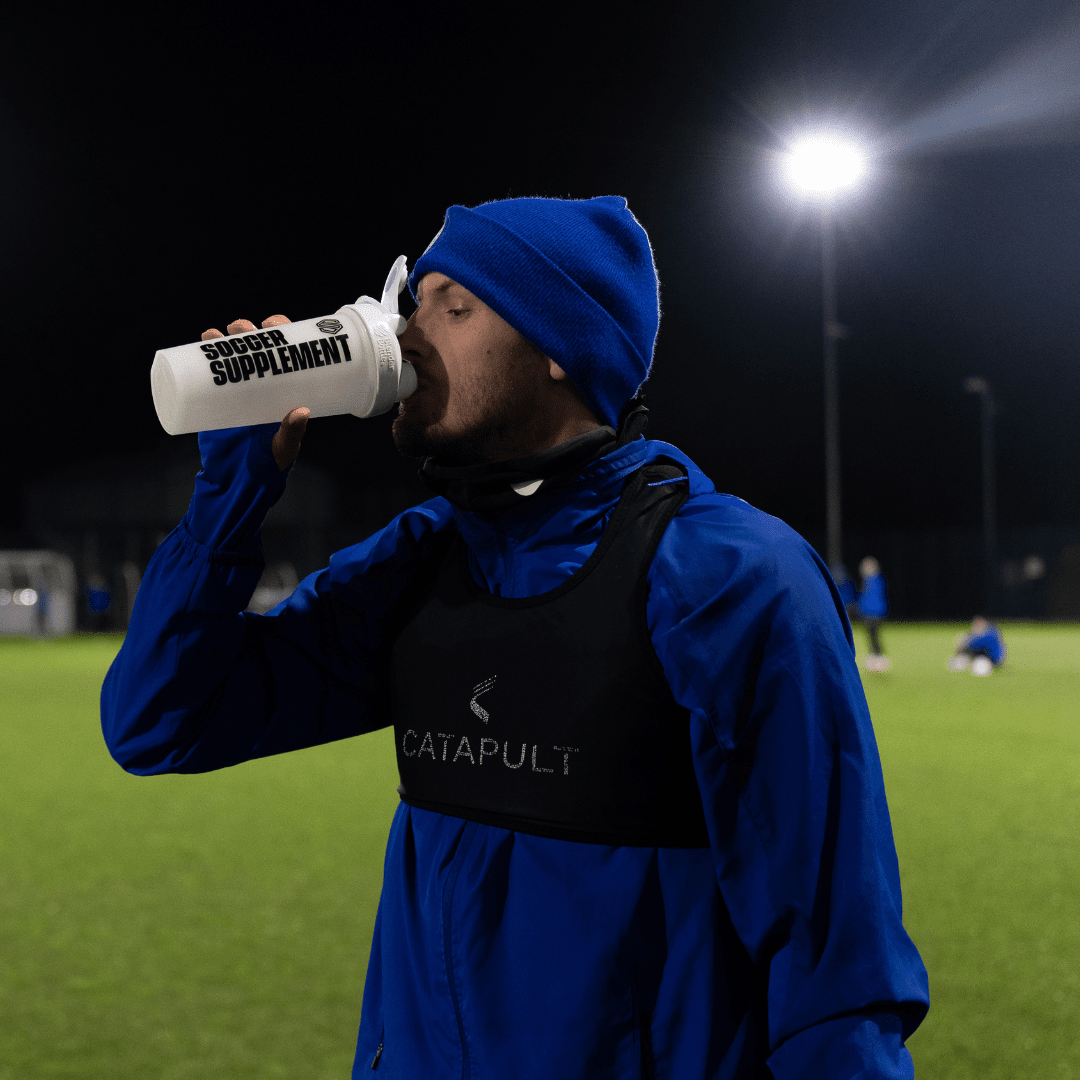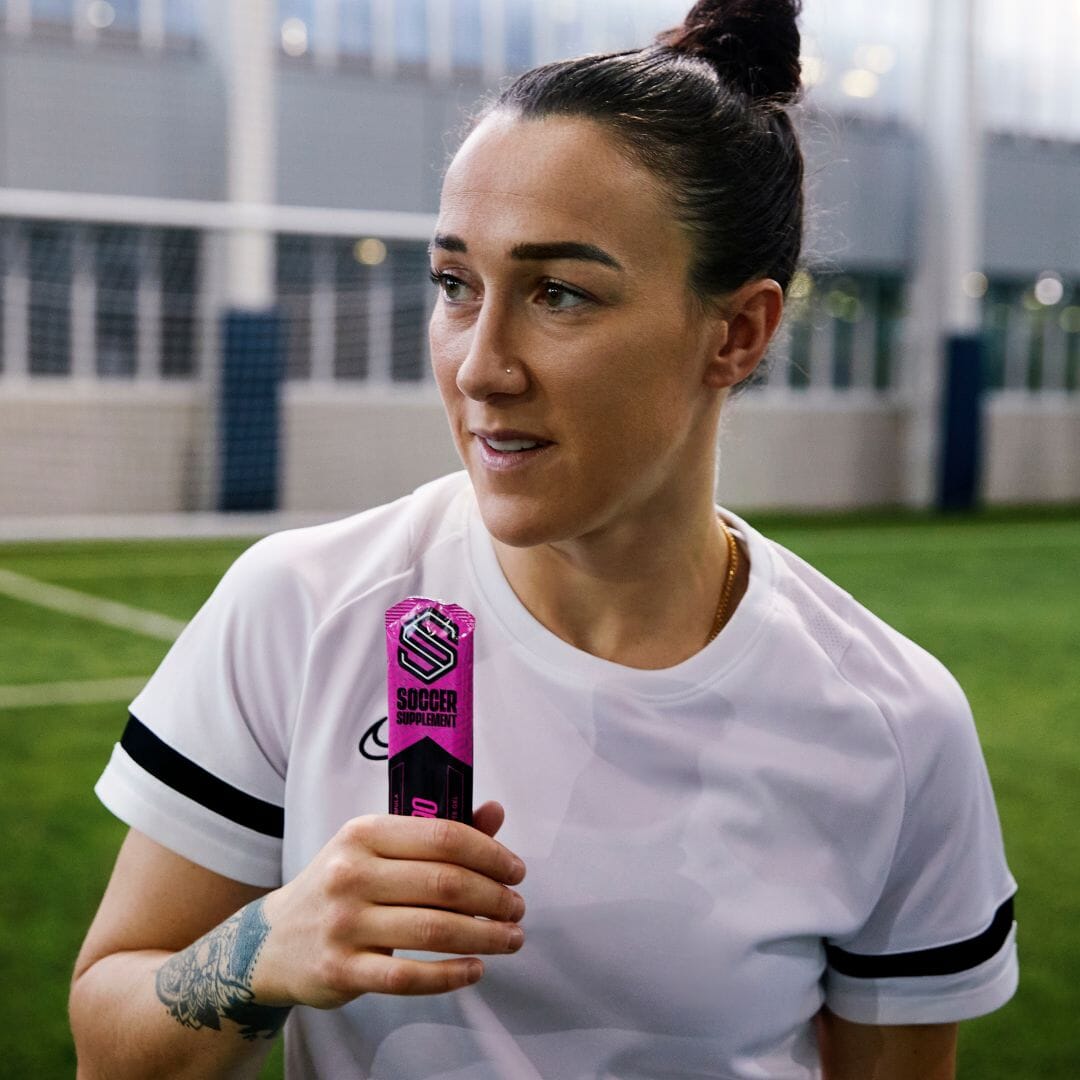Fancy yourself as the next Pernille Harder or Marta? Or simply fancy a kick-around with your local women’s football team?
You have come to the right place, as we are about to dive into the world of women’s football!
In this article, we explore the colourful history and exciting future of the women’s game, before offering practical tips on training, nutrition and how to get into the game yourself. We also offer some advice on physiological issues facing women while playing.
THE ROLLERCOASTER HISTORY OF WOMEN’S FOOTBALL
While women have been kicking a ball for as long as men, the women’s game has certainly been slower to develop. This has largely been down to attitudes surrounding gender stereotypes and archaic ways of thinking, which are thankfully being eliminated.
The first British women’s football teams emerged in the late 1800s in Scotland, although efforts to establish a women’s league were abandoned due to constant protests and disruptions. At the time, football was seen as a game appropriate only for men, and that women playing football was amusing, dangerous, or – as one newspaper article described it at the time – ‘a deterrent to beauty’.
While initial attempts failed, the effort of these early pioneers was not in vain and in the early 20th century, women’s football enjoyed a sudden boom in popularity. This was largely due to men’s football being suspended during the First World War, with the women’s game swooping in to give the country something to enjoy and feel patriotic about.
As the war ended, women’s football had become widely accepted and pulled in huge crowds. In a 1920 Boxing Day match, two women’s teams – Dick, Kerr’s Ladies FC and St Helen’s Ladies – battled it out at Goodison Park in front of a record 53,000 people, with thousands more turned away.
While you may assume that this was the start of something big for women’s football, on 5 December 1921, the Football Association abruptly banned women’s football on FA-affiliated pitches, effectively killing the professional game for women in the UK. It wasn’t long before countries like France, Brazil and West Germany all followed suit.
Half a century passed before women’s football was able to make new ground, when the ban was eventually lifted in 1971. In this year, England’s new women’s team featured in an unofficial but hugely popular World Cup in Mexico, playing in front of large crowds and sponsored by many famous brands.
Even though there have been further ups and downs since, attitudes have finally changed and in the 21st century, women’s football is stronger than ever. It’s no surprise when we’ve seen players such as Lucy Bronze, Mia Hamm, Michelle Akers, Sun Wen, Kelly Smith and Brazil’s iconic Marta impress on the pitch and make the headlines over the decades.
In 1991, the FIFA Women’s World Cup was born and had its eighth iteration in 2019, with the USA lifting the coveted trophy. The ninth edition of the competition will be jointly hosted by Australia and New Zealand in 2023 and we can’t wait!
HOW TO GET INTO WOMEN’S FOOTBALL
As the future looks so bright for the women’s professional game, interest is naturally growing – both in terms of fans and players.
If you are looking to get into playing football or even start your daughter in grassroots football, the time has never been better for women.
Whatever your age or ability, there will be something for you. This could be as simple as gathering together a group of friends (whether all female or mixed) and having a kick-around in the park every week.
If you want something more structured or competitive, you can join a local 5-a-side or 11-a-side team. In the UK, many schemes exist to help women and girls find the football for them, whether youth teams, casual kick-arounds, walking football, or professional clubs.
Our advice is to check with your country’s Football Association, which will offer guidance and contact points for women’s football in England, Scotland, Wales and Northern Ireland.
HOW TO TRAIN FOR WOMEN’S FOOTBALL
Women’s football is just as fast, physical and technical as men’s, which is why football training for women should be tackled in the same way. This means attention should be paid to all three branches of training: Physical, Technical and Tactical.
While all three overlap, they can be summed up relatively simply. Physical training is preparing your body for strength, speed and endurance. Technical training is training your on-the-ball skills – the art of dribbling, shooting, ball control and passing. Tactical training is usually worked on as a team; developing tactics, positioning and creation of opportunities.
The majority of technical and tactical training will be done with your team, while much of your physical training will be left to the individual player – especially at lower levels.
You can read more on these branches and how to get the most from your training in our complete guide to football training.
FOOTBALL NUTRITION FOR WOMEN
Whether you have a vigorous training and playing schedule, or simply want to be bursting with energy for your five-a-side match, it is crucial to focus on your nutrition.
Football nutrition can be a complex subject, although it can also be summed up pretty easily – eat enough to sustain your activity.
Of course, the quality and type of food you eat is important, especially around matches. Eating a balanced diet containing quality carbohydrates, protein and fats throughout the week is important, although the closer you get to matchday, the more you should prioritise carbohydrates.
Carbohydrates are particularly important before a match because they are the body’s preferred fuel source. It is smart to eat a pre-match meal including complex carbohydrates, such as pasta, rice, bread or potatoes, along with a little protein. Carb-heavy meals eaten at least 3 to 4 hours before the match will keep your muscles ready for what lies ahead. Read more in our article on everything you need to know about carbohydrates for footballers.
In addition to nutritious carb-focused meals, taking on an energy supplement just before the match and at half time can give you the immediate burst of energy you need to perform. This could be a sports drink or an energy gel such as our Focus90® and Fuel90®. Developed specifically for footballers, these gels deliver fast-acting carbs along with other performance boosters to give you the edge before and during your match. You can find more information in our guide to energy gels for footballers.
Good hydration is also critical. Every day you should aim for around two litres of water spread throughout the day to maintain a good level of hydration.
During training and matches, you should drink more water before, during and after to replenish the fluid lost through sweat. Adding electrolytes from a supplement such as our Hydrate90® is a good way to boost your hydration and replace the electrolytes you lose through heavy sweating. Click here for more information on the importance of hydration for footballers.
Eating plenty of wholefoods – including fruits, vegetables and wholegrains – will ensure you are meeting your daily vitamin and mineral requirements. While micronutrient requirements are generally similar for men and women, some nutrients require more attention.
CAN WOMEN PLAY FOOTBALL DURING THEIR PERIODS?
Yes – there is no reason why women should not play football during menstruation, providing you feel comfortable.
Physical activity such as playing football is known to help ease typical menstrual pain such as cramps and spasms, as well as relieve some pre-menstrual symptoms.
While some surveys have suggested that there are unlikely to be impacts to on-field performance, everybody is different and some women will perform worse than usual around this time. On the other hand, some women reported better performances! Ultimately, it is a personal choice.
CAN WOMEN PLAY FOOTBALL WHEN THEY ARE PREGNANT?
Providing you are already fit and active, the benefits of exercising during pregnancy are agreed to outweigh any possible risks. Exercise can help you to keep fit, feel better mentally, and manage your weight more effectively.
Having said this, while exercise and pregnancy has been studied in depth, not a lot of research has been done into pregnancy and playing football.
According to FIFA, the general recommendation of obstetricians is ‘not to participate in sport activities which put you at risk of stumbling, falling or blows and kicks to your abdomen’, as this could lead to severe complications. Running and jumping in the later stages of pregnancy is also discouraged.
As with other things, the decision is down to you and you alone. However, it is always best to consult a doctor or midwife before playing football while pregnant.
CONCLUSION
Women’s football has had its share of adversity over the years, but today it is more popular than ever and the future looks very bright indeed. This is thanks to the millions of women around the world who lace up their boots every week, from your local five-a-side players to international superstars.
Whatever your ambitions, there is no better time to get involved!
Our range includes protein powders, energy gels and hydration tablets that have many benefits on the pitch. Up your game safely with Soccer Supplement today.









